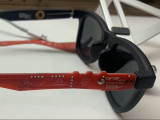I would like to interview individuals who worked on the Energy Atlas project, as part of a graduate comparative research study on sustainable urban energy use. I am a visiting student from the University of Pittsburgh, here to explore the topic of Sustainable Cities until June 13. I want to learn more about how the public and private partners involved in the Energy Atlas collaborated to develop the final product, what value they have derived from it, and what insights they might share about the process in retrospect. I hope to share the knowledge and lessons acquired from launching the Energy Atlas in a policy journal publication, and communicate that information to Pittsburgh's municipal government, private utilities, and sustainability advocates who might benefit from similar initiatives. Feel free to respond here (or you may reach me at dillion.asher@pitt.edu), hope to hear from you!
Want to receive updates like this in your inbox?
Get notified about new updates, opportunities or events that match your interests.
Maybe you will also like these updates
Sensemakers Workshop DIY Smart Glasses

During this evening Paul Stefaan Mooij will introduce the DIY Smart Glasses he developed, he is bringing several 'arms'. The PMSG kit lets you swap out those boring old arms from your (sun)glasses for a custom-made PCBA that looks and functions like something a hacker MacGyver would dream up. It fits just like the original—using the same hinges, screws, and probably duct tape somewhere—but now you’ve got space for sensors, connectors, and all the IoT magic you can pack onto your temples.
Join us to experiment, learn and envision new sensors and possibilities.
https://www.hackster.io/psmooij/pmsg-prototype-modular-smart-glasses-8bd4e6
https://github.com/Control-C/PMSG
You don't have to rsvp via meetup, the workshop is from 19-21h in the Makerspace of the OBA and you can just walk in!
OBA: Oosterdokskade 143, 1011DL Amsterdam
Sensemakers Workshop Meshtastic, configure your own node (for Amsterdam-wide coverage)

Join us to learn to understand the concept of Meshtastic, an open source, off grid, decentralized, mesh network build to run on affordable low-power devices!
Prepare and configure your own device as to contribute to Amsterdam wide coverage, or just for fun / to chat:-)
The workshop is based on this device: https://nl.aliexpress.com/item/1005007752194012.html Of course you may bring a different device, it only might take a little extra effort on your part if the settings are different. We will try to help of course!
You don't have to rsvp via meetup, the workshop is from 19-21h in the Makerspace of the OBA and you can just walk in!
OBA: Oosterdokskade 143, 1011DL Amsterdam
Sensemakers X-Mas Workshop

For our end-of-the year event we have some extra opportunities to build, create and even program your own souvenir to take home!
Please if you want to make and take home the Xmas lights you see in the picture, the kit costs 25,- (we also have 2 Pay-It-Forward kits). Of course you can also work in other small projects or 3D print a small Xmas tree or make (for children!) a self designed wooden lamps!
You don't have to rsvp via meetup, the workshop is from 19-21h in the Makerspace of the OBA and you can just walk in!
OBA: Oosterdokskade 143 1011DL Amsterdam


#InYourMail!
@joostbrinkman @bobmantel , can you help Dillion?
Hi Nancy, thank you for your reply! I have a copy of this report, which has been very useful indeed! I am seeking further comments on partner's experiences as well, and of course info on any updates or revisions that might be planned for the Energy Atlas platform.
Hi Dillion, thanks for the question! The Amsterdam University of Applied Sciences did an extensive research on smart city projects. From page 15 you'll find more about the Energy Atlas: https://amsterdamsmartcity.com/posts/organizing-smart-city-projects-lessons-learned-fr